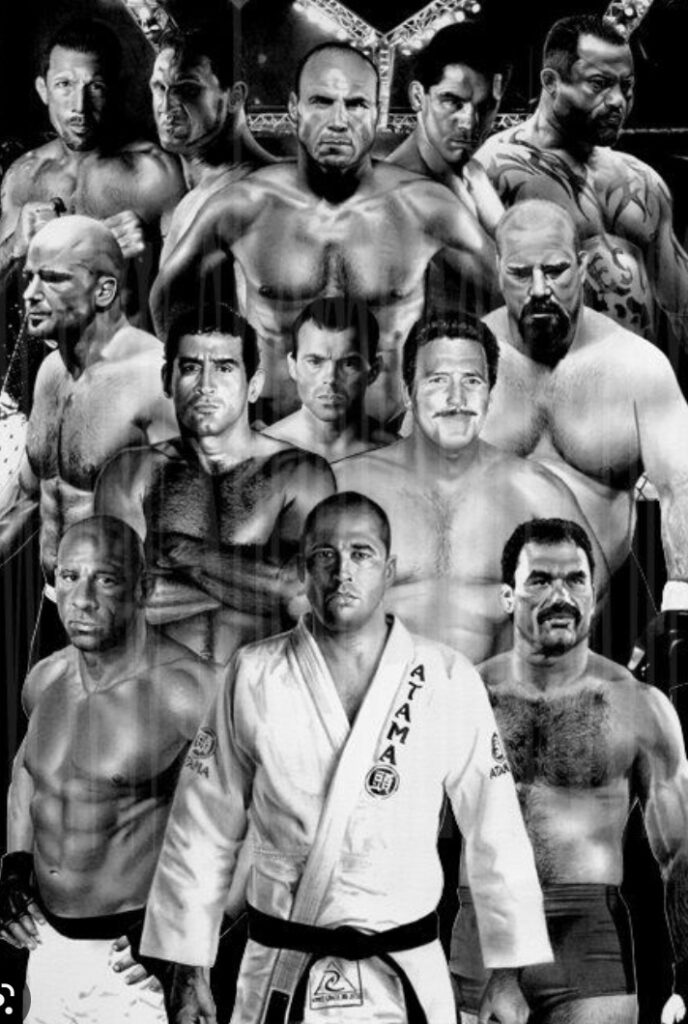
Mixed Martial Arts (MMA) has come a long way since its inception. The sport has evolved significantly over the years, with the introduction of various techniques and rule changes. But, to fully understand the evolution of MMA, we need to go back to the early days of the sport.
The Birth of MMA
The origins of MMA can be traced back to the ancient Olympic games in Greece, where a combination of striking and grappling techniques were used in combat sports. However, modern MMA, as we know it today, began in the early 1990s, when Brazilian Jiu-Jitsu (BJJ) practitioner Rorion Gracie created the Ultimate Fighting Championship (UFC).
The first UFC event was held in 1993, and it featured a tournament-style format with fighters from different disciplines, including boxing, wrestling, kickboxing, and BJJ. The idea was to determine which martial art was the most effective in a real fight.
In the early days of MMA, there were virtually no rules, and fighters were allowed to use any technique they wanted, including headbutts, groin strikes, and hair pulling. The fights were often brutal and bloody, with few safety measures in place.
Top Fighters of the Early Days
In the early days of MMA, there were several fighters who dominated the sport. Here are some of the top fighters of the early days:
- Royce Gracie – Royce Gracie was a BJJ practitioner and one of the founding members of the UFC. He won the first two UFC tournaments, using his grappling skills to defeat opponents much larger than himself.
- Ken Shamrock – Ken Shamrock was a professional wrestler and martial artist who competed in the early UFC events. He was known for his striking ability and his submission skills.
- Dan Severn – Dan Severn was a wrestler who competed in the early UFC events. He was known for his strength and his ability to dominate opponents on the ground.
- Tank Abbott – Tank Abbott was a brawler who relied on his punching power to win fights. He was one of the most popular fighters in the early days of MMA.
Rule Changes
As MMA grew in popularity, there were concerns about the safety of the fighters, and there was pressure to introduce rules to make the sport more palatable to mainstream audiences. Here are some of the key rule changes that have been introduced over the years:
- Weight Classes – In the early days of MMA, there were no weight classes, and fighters of all sizes would compete against each other. Today, there are several weight classes, ranging from flyweight (up to 125 pounds) to heavyweight (over 265 pounds).
- Time Limits – In the early days of MMA, fights could last indefinitely, and there were no time limits. Today, most MMA fights have a time limit of three or five rounds, depending on the championship level.
- Gloves – In the early days of MMA, fighters were not required to wear gloves, and many chose not to. Today, fighters are required to wear gloves that are designed to protect their hands and reduce the risk of injury to their opponents.
- Referee Stoppage – In the early days of MMA, fights would often continue even if one fighter was clearly outmatched or injured. Today, referees are empowered to stop fights if they believe that one fighter is unable to continue.
- Illegal Techniques – In the early days of MMA, virtually any technique was legal. Today, there are several techniques that are considered illegal, including headbutts, eye gouging, and groin strikes.
The Evolution of MMA
Today, MMA is a highly organized and regulated sport that is recognized around the world. The sport has come a long way since its early days, and it continues to evolve with the introduction of new techniques, athletes, and promotions.
One of the key developments in the evolution of MMA has been the rise of specialized training camps and techniques. Fighters now train in a variety of disciplines, including wrestling, Brazilian Jiu-Jitsu, Muay Thai, boxing, and kickboxing. This has led to a much more well-rounded approach to fighting, with athletes able to use a variety of techniques to outmatch their opponents.
Another important development has been the rise of women’s MMA. In 2012, the UFC introduced a women’s bantamweight division, and female fighters have since become some of the most popular and exciting athletes in the sport.
The sport has also seen the emergence of several dominant fighters over the years, including Anderson Silva, Georges St-Pierre, Jon Jones, and Conor McGregor. These fighters have become household names and have helped to elevate the sport to new heights.
In conclusion, the early days of MMA were marked by a lack of rules and safety measures, but the sport has since evolved significantly. Today, MMA is a highly regulated and well-organized sport that continues to grow in popularity around the world. The introduction of new rules and techniques has helped to make the sport safer and more exciting, and the rise of specialized training camps has led to a more well-rounded approach to fighting. MMA is now recognized as one of the most dynamic and exciting sports in the world, with a growing fanbase and a bright future ahead